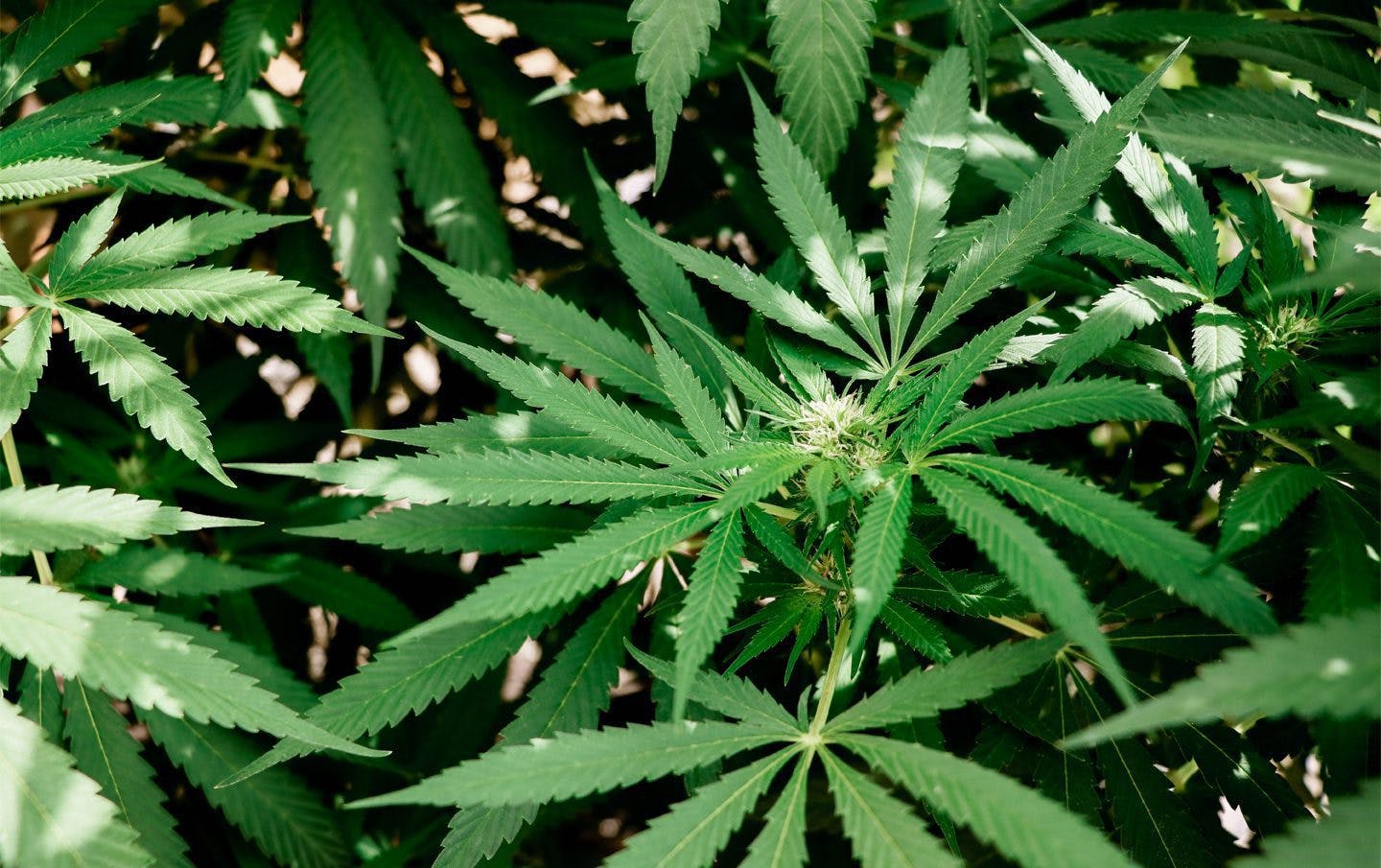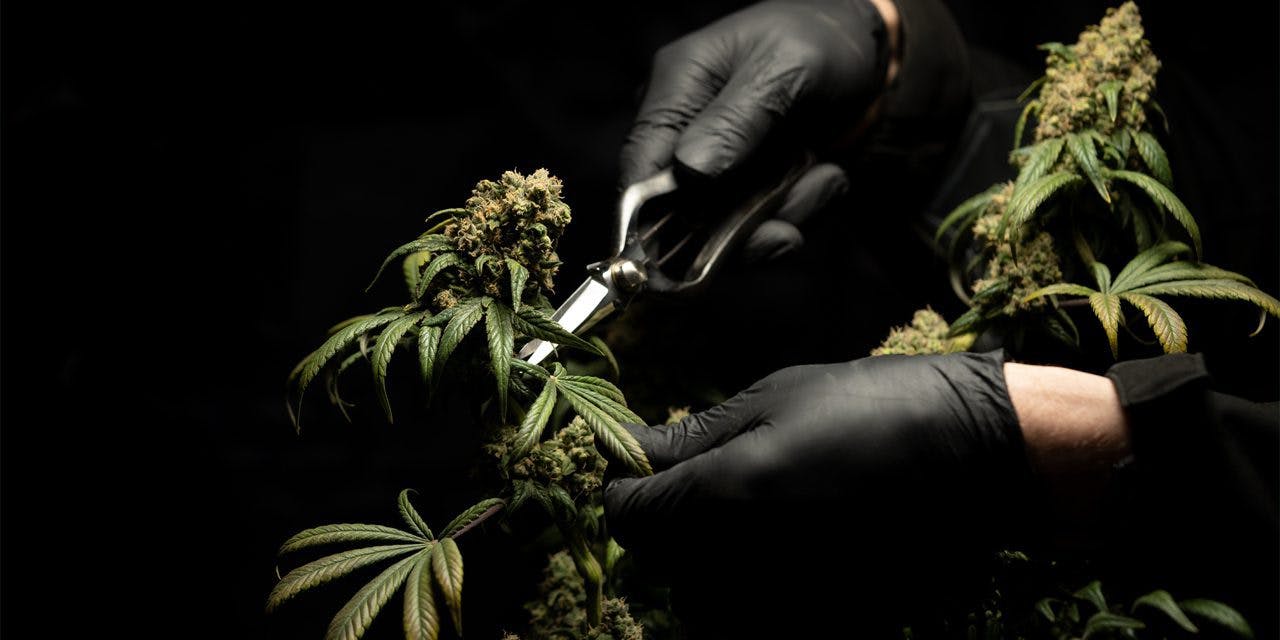What Does Moldy Weed Look Like?
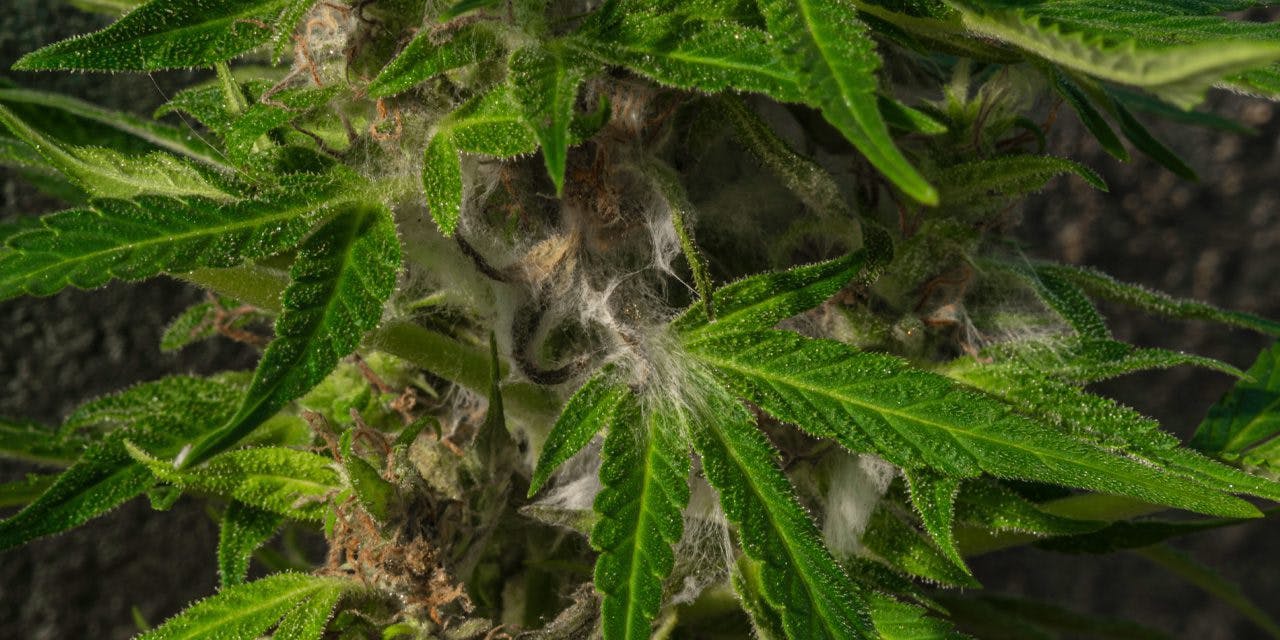
Article written by

Dipak HemrajHead of Research and Education
Content reviewed by

Dr. Lewis JasseyMedical Director - Pediatric Medicine
When growing cannabis, one of the things you need to watch out for is mold growth on your cannabis plants. Discolored or dark spots and white fuzz are telltale signs of mold, but it can also be green or black.
And like growing cannabis plants, already dried and cured cannabis buds can grow mold as well. If you notice that your buds have a fuzzy white, brown, black, or gray coating, do not use them.
Get your medical marijuana card
Connect with a licensed physician online in minutes.
What Causes Mold on Cannabis?
Cannabis mold can be caused by an array of factors:
- Low temperatures: If temperatures are too low, exposure to moisture can result in mold growth.
- High humidity: Overwatering or leaving your plant in overly humid conditions can also contribute to mold growth.
- Improper storage: Improperly drying and curing your cannabis, as well as improper storage, can also cause mold to form.
- Injury: Injuries to the plant can increase the chances of mold growing on the weed.
In nature, mold helps the recycling process of plants by breaking them down and making the nutrients available in the soil. However, mold is very undesirable for humans requiring the plant for medication. It can increase the likelihood of other plants in your grow space being infected by mold, pathogens, and pests.
Download Free Guide to Plant Pests
How to Identify Moldy Weed
When it comes to how to tell if weed is moldy, there are a few key things to look for. Marijuana mold often presents as white, fuzzy hairs but can also be fuzzy brown, black, or gray. The mold will also sometimes have an unpleasant odor.
There are also different types of mold that can grow on your weed. Powdery mildew, for example, is a type of powdery mold and can appear as thin black or white spots on the leaves and buds of cannabis plants.
Bud rot and root rot are other conditions caused by fungi that can become detrimental to an entire crop if not swiftly taken care of.
Bud Rot
Darker colors of mold may signify bud rot, as they could be a type of mold called botrytis. Bud rot or botrytis is a relatively common fungus that occurs when a cannabis plant’s humidity and air circulation are not properly controlled. Outdoors, it is typically spread through wind and rainwater. It prohibits a plant from getting the water and nutrients it needs and results in plant death.
It also tends to attack injured plants, so stress training can be a vulnerable time for a plant, even if it can increase yield and strengthen the plant in the long term. You can prevent the start of the bud rot cycle by providing a warm, dry and airy environment for the plant to recover.
If you identify botrytis on one plant, remove the plant as quickly as possible to avoid infecting surrounding plants.
Root Rot
Root rot is a fungus that affects the roots of your cannabis plant. It is typically caused by overwatering, hot temperatures, or poor drainage. It’s hard to identify given the location of the rot, but if you notice that your cannabis plant’s leaves are browning and wilting, that may signify that you’re dealing with root rot.
To determine if root rot is the cause, you’ll need to look at the plant’s roots. Healthy roots are white. Roots overtaken by root rot are black and mushy.
Moldy Weed vs. Trichomes
Trichomes are tiny, glandular appendages on the surface of cannabis flowers. They can be found all over the plant but primarily appear on its flowers and leaves. They’re an essential and important part of the cannabis plant as they produce most of its cannabinoids, terpenes, and flavonoids.
If you’re unsure if what you’re looking at is a mold outbreak or those oh-so-important trichomes, take out a magnifying glass, as it may be hard to decipher with the naked eye. (A black light may also be useful as mold spores typically glow under black light.) Trichomes are shiny and sticky, have mushroom-like tips, and have a milky or crystalline appearance. Mold, on the other hand, is usually fuzzy, white, brown, black, or gray and typically emits an unpleasant odor.
The following pictures of moldy weed can give you an idea of what to look for when inspecting your cannabis plants.
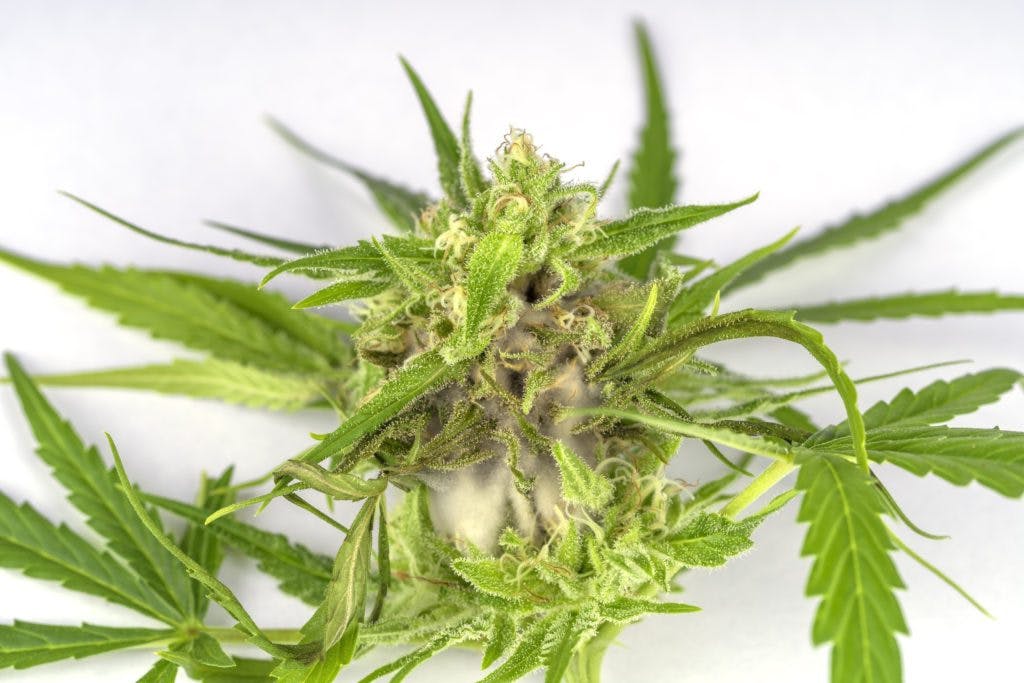
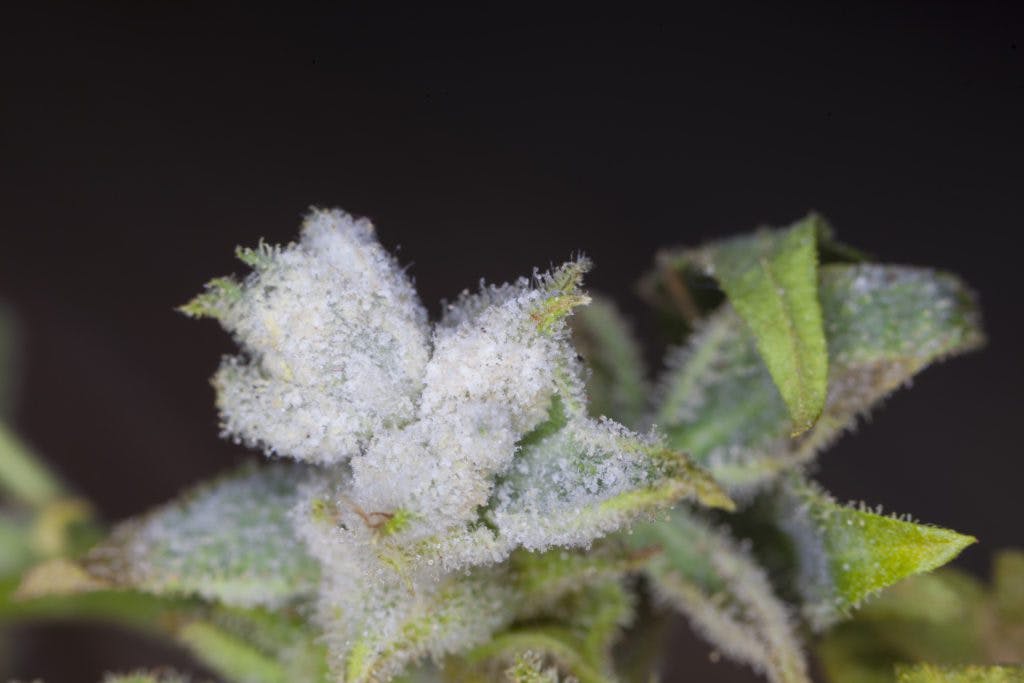
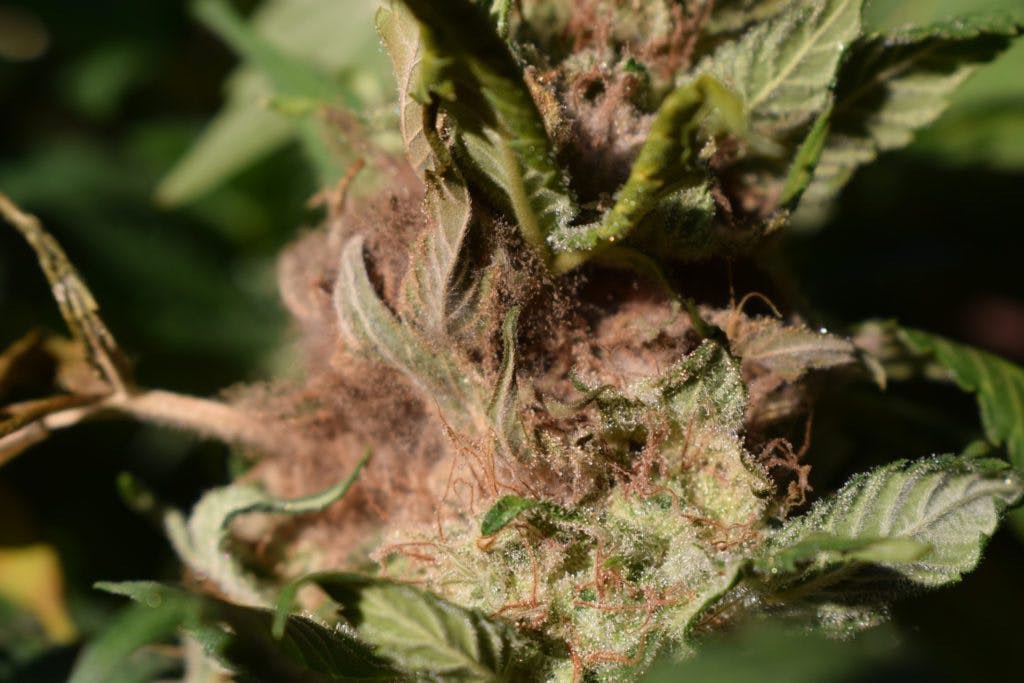
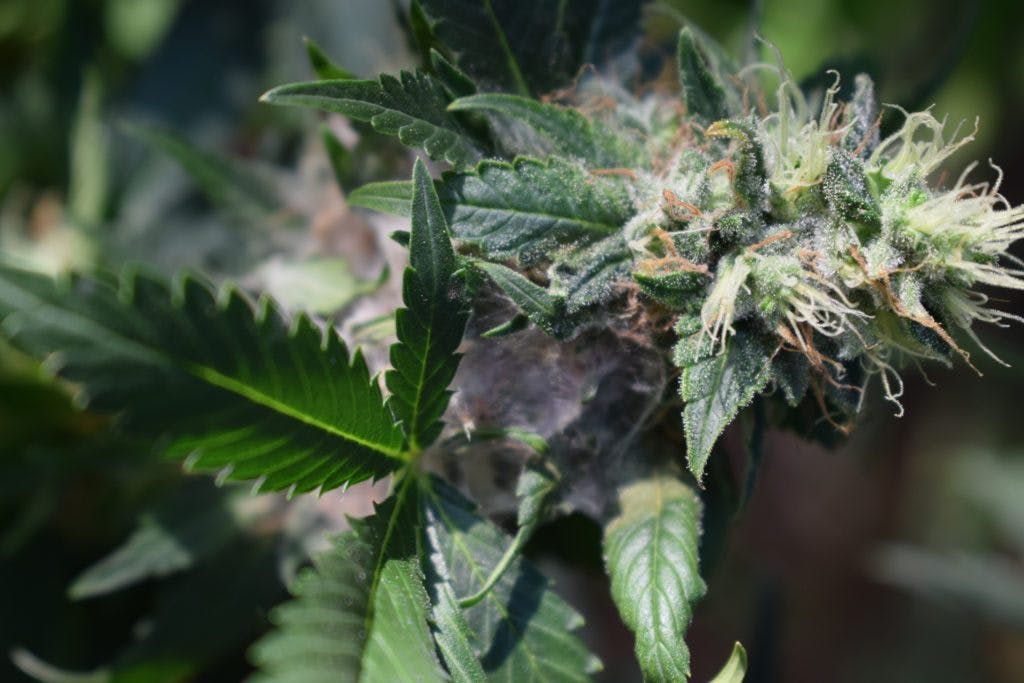
Is Mold on Weed Harmful?
Yes, moldy cannabis can be harmful, especially if inhaled into the lungs, as it can cause a lung infection or an allergic reaction. This is especially dangerous for people with weakened immune systems.
If you’ve purchased weed from a dispensary and notice that it’s moldy, take it back and ask them for a refund or a replacement. And remember that, just like any other plant, cannabis has a shelf life. If you notice mold on previously dried, cured, and stored cannabis, it’s best to toss it, even if some nugs may not look like they’re moldy.
12 Ways to Prevent Mold on Weed
The best ways to prevent moldy weed are:
- Proper drying and curing
- Proper storage in airtight containers
- Adequate airflow and grow room filtration systems
- Avoiding over-watering during the final stages of flowering
- Providing a warm, dry and airy environment for stress-trained plants to recover
- Controlling relative humidity levels and reducing them to less than 50%
- Using propolis or bee glue, which can be spread or sprayed on plants to kill mold
- Using bordo mix — an organic fungicide mix made up of copper, sulfate, and slaked lime and used as a spray
- Using essential oils of thyme, rosemary, eucalyptus, black caraway, and lemongrass that can be used as diffusers to help prevent mold spores from settling
- Placing silica in the soil to help strengthen stems and act as an alkaline adjustor
- Removing the infected parts of the plant or removing the plant entirely and disposing of it if the mold is too severe
Moldy marijuana plants are more susceptible to diseases and pest infestations, which can harm other plants in the vicinity. Treating mold growth before it becomes a further problem is of utmost importance to prevent a great crop from becoming a disaster. In some cases, you may need to dispose of the plant.
If you’re buying from a dispensary, make sure they sell high-quality weed. And to make the buying process even more enjoyable, Leafwell can help you obtain a medical card that may cut down on the taxes you pay for your cannabis products. Connect with one of Leafwell’s physicians today to secure your medical marijuana card.
Frequently Asked Questions
What does bud rot look like?
Bud rot starts as a fluffy white growth on the buds of the cannabis plant. As it spreads, the mold turns dark gray or brown and infiltrates the bud.
Can you save moldy weed?
You can’t save moldy weed. Trimming off the mold does not guarantee that the fungus has not infiltrated the flower. It’s a good idea to toss the weed to avoid any unwanted health consequences.


